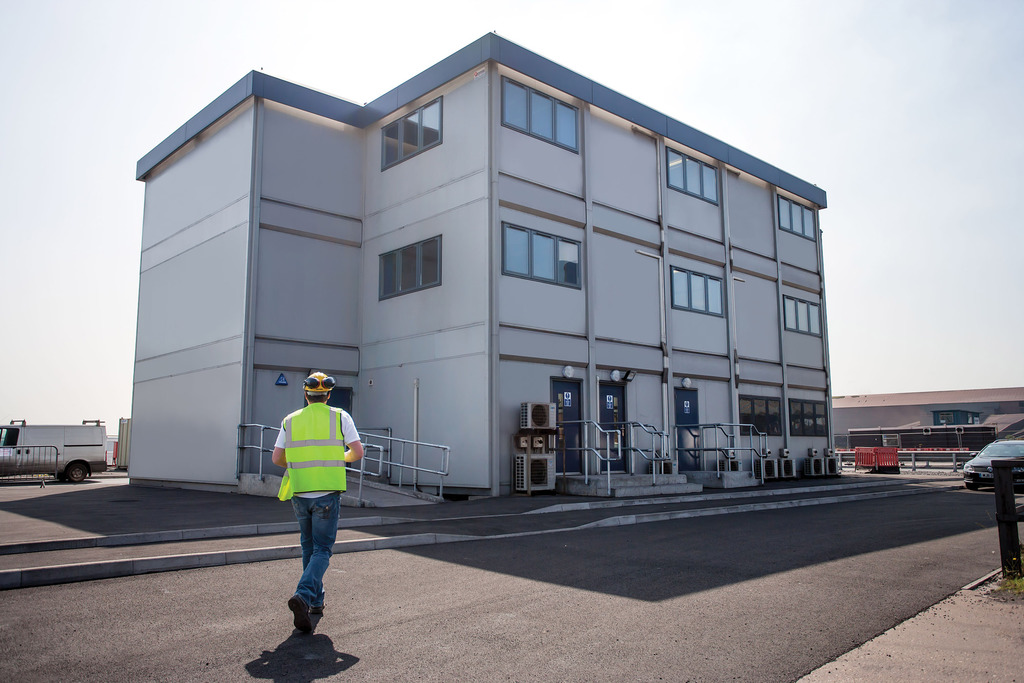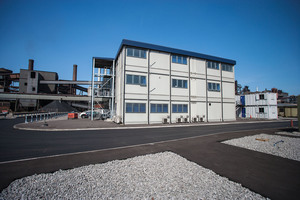

|
Edward Lowton
Editor |


|
| Home> | Premises management/maintenance | >Relocatable buildings | >Building 5 for Tata Steel |
Building 5 for Tata Steel
23 September 2013
Foremans Relocatable Building Systems, a supplier of refurbished Portakabin buildings, has handed over its fifth building to Tata Steel in Scunthorpe – a new project office for a major redevelopment on the integrated steelmaking site.

This latest scheme, which is constructed from recycled and refurbished steel-framed building modules, will accommodate 60 project engineers who were previously working from a number of locations across the Scunthorpe site. Foremans has already delivered three office buildings and a canteen on the same site.
The three-storey building, known as ‘The Palace’ by Tata Steel staff, provides open plan offices and conference, induction and meeting rooms, as well as shower and toilet facilities. Foremans supplied the building around 70% complete, with doors, windows, partitions, flooring, plumbing and electrics all pre-installed to reduce disruption to day-to-day operations. Data communications, fire and security systems were also installed by Foremans.
Commenting on the project, David Norris, Project Manager at Tata Steel, said "We looked at new manufacture and traditional brick build at the start of this project, but a refurbished Portakabin building gave us the benefit of significant savings in both cost and programme. We were also impressed that the building structure has a 60-year design life.”
"We were very pleased with the level of service we received from Foremans and their performance throughout. This is an excellent building delivered within our cost constraints and it looks brand new – you would never know its structure is recycled. We have used Foremans buildings previously on this site – and will be issuing a commendation via our purchasing department for their team’s performance on this project.”
The use of recycled Portakabin buildings is one of the most environmentally sound methods of construction. It is said to generate less than 10% of the carbon emissions and to use less than 3% of the energy during construction, compared to a newly manufactured building of equivalent size (source: MPBA/Arup). Other benefits include programme times reduced by up to 70%, reduced cost, and the buildings can be easily expanded, reconfigured or removed if an organisation’s requirements change.


















